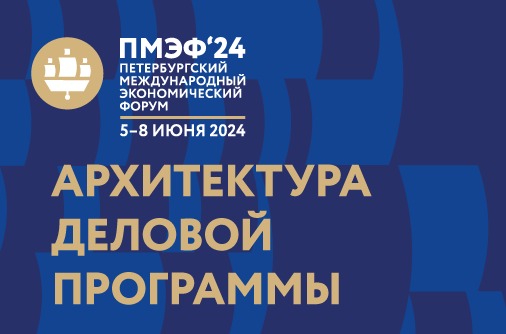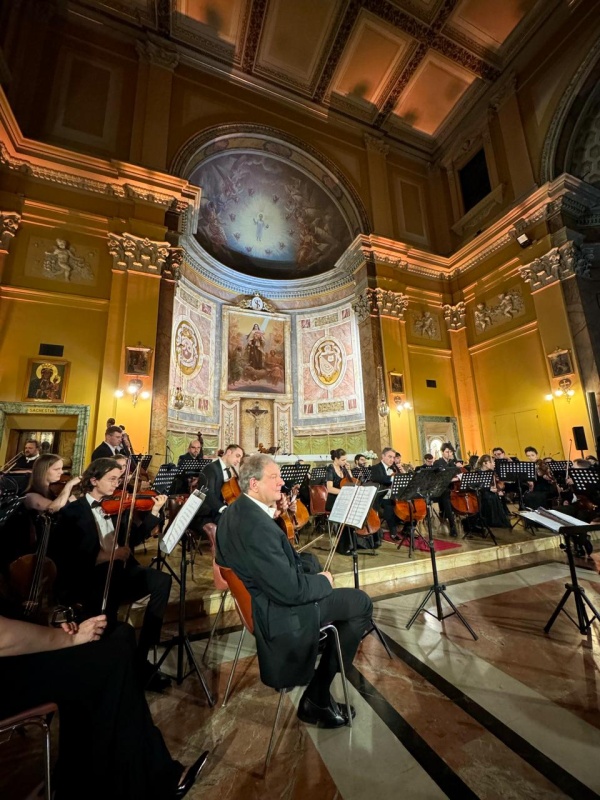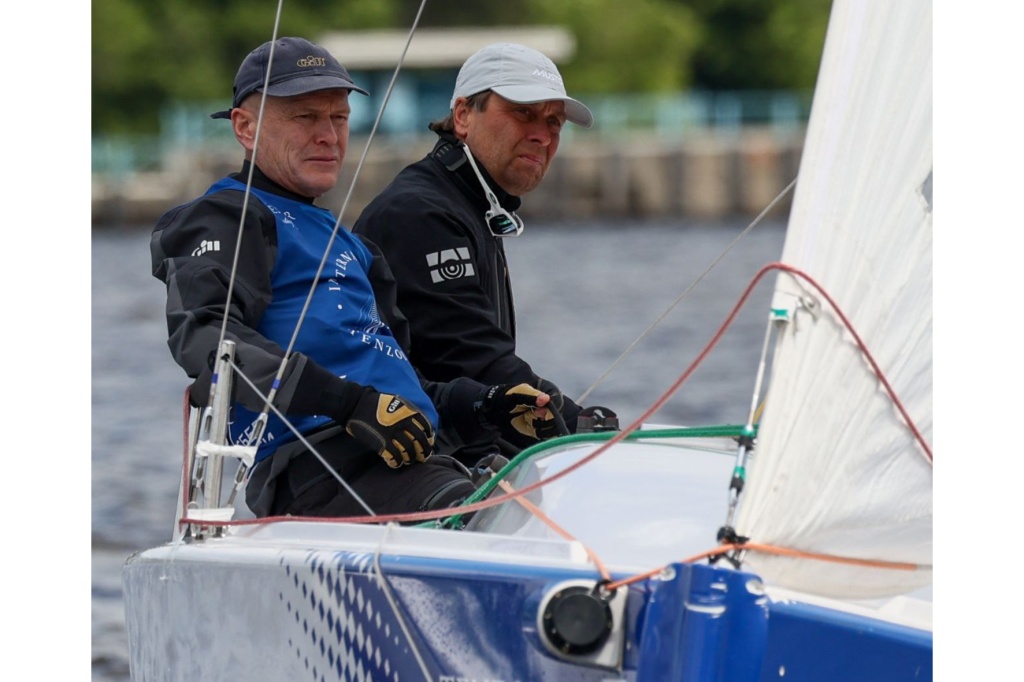
THE RUSSIAN ECONOMIC GROWTH AGENDA
Before embarking on the discussion, the participants of the Panel Session answered the key question: “What should be done to set the economy on a path to sustainable growth?” Six answer options were suggested.
The options were as follows:
- Reduce inflation to 4.0%
- Wait for higher oil prices
- Get the sanctions lifted
- Reduce borrowing costs
- Transition away from the economy dominated by the oil and gas sector
- Actively stimulate demand
The option of “Transition away from the economy dominated by the oil and gas sector” got the majority – 53.5% of votes.
The discussion was started by Sergei Glazyev, Adviser to the President of the Russian Federation. Economic situation in a country should always be considered in dynamics. Today, we are witnessing a change of the technological order. By dwelling at the start, we risk falling irreparably behind. A good example would be LEDs: 15 years ago we successfully designed them but failed to launch manufacture. Now, the USA produces 7.0 billion LEDs per year, and we import them.
Conventional growth directions do not work anymore, while no new directions have been identified. The economy is going through a 15-years depression. In these times, capital is actively shifted to the new technological order industries.
The countries that manage to master these new technological paths ahead of others will gain the lead and accomplish an economic miracle. Meanwhile, those who wait for the technology to come to them, will fall desperately behind and find themselves restricted to a catch-up development policy, spending all their raw-material proceeds to pay intellectual rent. Dwelling at that phase is fraught with very significant gap in the future.
Outlines of the new technological order are already visible. In 3–4 years, technological revolution in the economy will result in a distinctly different demand pattern. Demand for power sources will drop. Power consumption efficiency will multiply. The Russian traditional way of living as an oil and gas pipe has no prospects. The chances of oil price increase are very poor.
The key requirements for the state in this period is to mitigate risks, provide business with a perspective outlook on the areas that can yield maximum results, and help the business in mastering new technology. This underpins a growing role of the state in economic development stimulation through increasing R&D financing and reducing taxes. The countries that are leaders in this area opt for tax refunds. There are 1.5 subsidy units per one unit of R&D investments. The state makes its best to stimulate innovative activity and exempts it from all kinds of taxes.
The key industries that drive new demand are healthcare, education and science. They will account for more than 50% of the gross product. Who would develop them but the state? It largely depends on the state weather they will become development engines. In this period the state budget may to some extent become a tool for stimulating development of advanced sectors and enabling economic growth.
The leading countries got the challenge of these times right and switched to an industrial monetary policy. Everywhere around the globe except Russia there are low interest rates, long-term crediting and considerable monetary expansion despite of the monetarists’ appeals for the opposite with the view of maintaining low inflation.
Cash is being pumped in for the purpose of facilitating business access to financial resources. This is the little that the state can do for the business – lift financial restrictions. Controlled issue of loans is a prerequisite for economic growth. There are no other sources. No personal savings, pension savings or foreign investments will help. Cash should be considered as a tool of the state monetary policy.
The task of the state is to integrate interests of all stakeholders in order to ensure maximum effect in cash management. Monetary shrinkage generates inflation, and decline in production and demand.
Frederick William Engdahl, President and Founder of Engdahl Strategic Risk Consulting pointed out that the USA and IMF are doing their best to make sure Europe is poor. In the times of Boris Yeltsin, the Administration of the US President George Bush Jr. fell over itself to lay the Russian economy open and depredate it.
The Russia’s Central Bank has to control inflation and ensure stability of ruble vs US dollar. Today, Russia is trapped by the monetarist system. Washington controls everything that goes on in Russia via your Central Bank. The monetarist policy of the Central Bank requires urgent overthrow.
Russia is at the moment in a state of quasi-war with the West. Deferring to its recommendations would be a sure way to economic suicide.
Today, it is necessary to identify as accurately as possible the economic problems of Russia in a wide geopolitical context and take a careful look at what is going on in the world. The state’s role in the economy needs radical revision. Western liberal economies are intellectual bankrupts.
Money is the blood of economy and should be circulated throughout its vessels. High interest rates suffocate all enterprises – small and medium-sized business in the first place.
There are important aspects associated with infrastructure. Such projects as high-speed thoroughfares and the Silk Route constitute gateways to a new economy. Not dominance of the state, but support and assistance to the entrepreneurial community. Russia has an amazing geographical and natural potential.
The European Union refuses to acknowledge this potential. Now it is time for Russia to direct its eyes to the East. The future of Europe lies in the economic potential of the European Union. This is what SCO and BRICS are doing nowadays.
The Governor of Krasnoyarsk Territory Victor Tolokonsky expressed his concerns about the current situation in the regions. Economic growth is a fundamental task for the country. Not suppressing inflation but building personal income of the population and regional budgets.
Two rather simple things are required for economic growth of Krasnoyarsk Territory: other cost of capital and other cost of credit. The current rates prevent the economy from developing. If the cost of capital were acceptable, the volume of investments into the Territory would triple immediately. The current investments amount to around USD 400.0 billion. The high cost of capital surely does not defeat inflation, while a high credit rate only promotes it.
There can be no active investment process with a poor infrastructure. Krasnoyarsk Territory lacks social attractiveness.
Is it possible to push up the budget without increasing taxes? – Yes, it is. It would take bringing to the light the considerable ‘shady’ part of our economy that remains out of the tax regulation range. Moreover, the profit tax proceeds should go to the budget of the region where the produce is made. High debts in the regions deteriorate the quality of management. Our debts are proceeds of banks. They see no need to credit the real sector. They live on the interest and enjoy RUR 200-250 billion of annual profits without any expenses.
Vladislav Soloviev, Chief Executive Officer of RUSAL Company picked up on the topic of monetary policy. He stressed that high interest rates give no way for development. The budgetary policy should become a development tool. Regions need financial independence.
Administrative barriers and regulatory controls prevent the use of our produce by households (aluminum wire), in bridges and rail cars construction.
Andrei Klepach, Deputy Chairman of Vnesheconombank reckons that the problem is not about the amount of money but the distribution thereof. The Central Bank of Russia has hold back the money stock. Incremental private deposits made up RUR 2.0 trillion in 2015. Regions are over-credited. It is necessary to mark down the interest rate. Inflation depends on global – primarily food – prices.
Russian economy is highly segmented. There is a need for targeted measures and tools in order to make the banking system invest into the Russian economy. According to the Federal State Statistics Service data, the banking system contributed around 5% to the national economy in 2015 and about 4.0% this year. The industry development fund has RUR 40.0 billion for the entire country. This is negligibly little. All small business support totals RUR 20.0 billion. Credits are extended on pawn, not against contract.
Human resources are the heart of the economy, but according to the Minister of Finance Anton Siluanov, the budget is. These are two essentially different approaches. The budget – just like the entire financial system – should serve people.
The system of relations with regions requires radical change. Efficiency of transfers to regions is extremely low. The regions have no income basis, yet we have discarded all liability and authority on them. Even the vodka and gasoline excises go to the center.
Boris Titov, the Presidential Commissioner of the Russian Federation for the Protection of Entrepreneurs’ Rights presented the Stolypin Club Program. According to him, the uncertainty around economic situation in the country is the most acute of all the problems that the business is currently concerned about.
Kirill Androsov, Managing Director of the Altera Investment Fund shared his recipe of sustainable growth. It is simple: the mankind hasn’t yet come up with anything better than a liberal economy based on two primary values – competition and efficiency.
Russia should make sure it doesn’t miss the opportunities offered by the crisis, Shiv Vikram Khemka, Vice-Chairman of SUN Group reckons. The country should build upon its advantages and wealth. These are the contacts, trade, investments, innovations, human capital, and upgrade-pending infrastructure.








